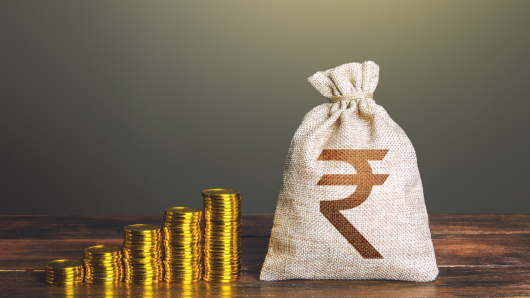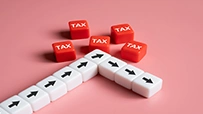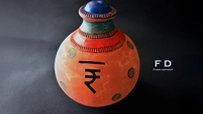Decoding Term Deposit Interest Rates
September 09, 2025

Term deposits are fixed-period investment instruments, meaning you deposit a fix sum of money monthly or in lump sum for a fixed tenure and earn interest on it. For example, Fixed Deposits (FDs) and Recurring Deposits (RDs) are just different types of term deposits. In this article, we have debunked the factors influencing term deposit interest rates so you are well-informed when booking an FD.
6 Key Factors Influencing Term Deposit Interest Rates
1. Repo Rate
The repo rate set by the Reserve Bank of India (RBI) is one of the primary factors that may affect FD rates. The repo rate determines how much interest banks pay when borrowing money from the RBI. When the repo rate increases, banks usually raise their FD rates to attract more deposits.
For example, if the RBI raises the repo rate by 0.25%, banks may increase their term deposit rates. It's essential to keep an eye on changes in the repo rate to identify opportune moments for investing in FDs. That said, interest rate changes a sole discretion of the bank.
2. Economic Conditions
The prevailing economic conditions, including fiscal and monetary policies, can impact term deposit rates. In a growing economy with a high demand for money, banks tend to offer higher interest rates on their FDs. Conversely, if there is an excess supply of money or lower inflation, FD interest rates may witness a decline.
For instance, during periods of high inflation, banks may raise their FD rates to attract deposits and compensate investors for the eroding value of money.
3. Tenure
Term deposit rates, like FD rates vary based on the tenure. For instance, for a short-term FD, you may earn higher interest rates compared to regular FDs. However, book an FD based on your financial roadmap and not on the basis of just interest rates.
4. Investment Type
The type of FD you choose can impact the interest rates offered on your FDs. Cumulative FDs that offer returns at maturity usually offer higher returns compared to non-cumulative FDs that provide periodic payouts.
If you are looking for steady income, non-cumulative FDs might be more suitable as they offer periodic interest payments. On the other hand, if you want to maximise your overall returns, a cumulative FD might be a better option.
5. Investor's Age
Your age also influences the FD rates available to you. Senior citizens, typically individuals above the age of 60, are often offered higher term deposit interest rates compared to regular depositors. Financial institutions recognise that senior citizens rely on interest income for their retirement and aim to provide them with better returns.
6. Inflation
Inflation can also influence FD rates. As inflation rises, it erodes the purchasing power of money over time. To combat this, financiers strive to keep their rates above the inflation marker. When inflation increases, term deposit interest rates are likely to follow suit.
How is Term Deposit Interest Rate Calculated?
Since FD is a type of term deposit, let’s check how FD interest rate is calculated. For FDs with a tenure shorter than 6 months, the interest is calculated using the simple interest method. For FDs with a tenure of 6 months or more, the interest is compounded quarterly.
The formula to calculate FD is M = P + (P x r x t/100),
M stands for 'Maturity Amount', P stands for the 'Principal Amount', r is for 'rate of interest', and t is the 'tenure'.
In case you want to know only the interest earned, you can subtract the principal amount from the maturity amount. For compounded interest, the formula is - M= P + P {(1 + i/100) t – 1}, where i is the 'rate of interest per period'.
However, manual calculations can be taxing and may leave room for errors. As a better alternative, you can use Ujjivan SFB online FD calculator. The calculator is extremely easy to use and gives you accurate results within seconds.
The Bottom Line
Stay informed about changes in repo rates, inflation, investment tenures, and other term deposit rate influencing factors so that you can make informed decisions about when, where, and how to invest in FDs to maximise your returns.
Looking to grow your savings? Ujjivan SFB offers a wide range of fixed deposit products. Select the FD of your choice and take a step forward to your financial goals. Alternatively, you can browse through Ujjivan SFB product suite - our wide range of financial products are designed to make your financial life better.
Disclaimer:
The contents herein are only for informational purposes and generic in nature. The content does not amount to an offer, invitation or solicitation of any kind to buy or sell, and are not intended to create any legal rights or obligations. This information is subject to updation, completion, amendment and verification without notice. The contents herein are also subject to other product-specific terms and conditions, as well as any applicable third-party terms and conditions, for which Ujjivan Small Finance Bank assumes no responsibility or liability.
Nothing contained herein is intended to constitute financial, investment, legal, tax, or any other professional advice or opinion. Please obtain professional advice before making investment or any other decisions. Any investment decisions that may be made by the you shall be at your own sole discretion, independent analysis and evaluation of the risks involved. The use of any information set out in this document is entirely at the user’s own risk. Ujjivan Small Finance Bank Limited makes no representation or warranty, express or implied, as to the accuracy and completeness for any information herein. The Bank disclaims any and all liability for any loss or damage (direct, indirect, consequential, or otherwise) incurred by you due to use of or due to investment, product application decisions made by you on the basis of the contents herein. While the information is prepared in good faith from sources deemed reliable (including public sources), the Bank disclaims any liability with respect to accuracy of information or any error or omission or any loss or damage incurred by anyone in reliance on the contents herein, in any manner whatsoever.
To know more about Ujjivan Small Finance Bank Products Visit:"https://www.ujjivansfb.in"
All intellectual property rights, including copyrights, trademarks, and other proprietary rights, pertaining to the content and materials displayed herein, belong
to Ujjivan Small Finance Bank Limited or its licensors. Unauthorised use or misuse of any intellectual property, or other content displayed herein is strictly prohibited and the same is not intended for distribution to, or use by, any person in any jurisdiction where such distribution or use would (by reason of that person’s nationality, residence or otherwise) be contrary to law or registration or would subject Ujjivan Small Finance Bank Limited or its affiliates to any licensing or registration requirements.
FAQs
1. What affects the interest rate on a term deposit?
Term deposit interest rates are influenced by factors like economic conditions, bank policies, FD type, tenure, and repo rate.
2. Why does the RBI change the repo rate?
The RBI changes the repo rate based on economic factors like inflation and growth to regulate borrowing costs for banks.
3. How often do banks change term deposit interest rates?
Banks often change interest rates periodically, usually in response to market conditions, policy changes. However, please keep in mind that the banks change term deposit interest rates at any time.
4. What is the relationship between repo rate and term deposit interest rates?
The repo rate and term deposit rates are connected: if the repo rate rises, FD rates tend to increase. This happens because higher borrowing costs for banks prompt them to raise FD rates to cover expenses.
5. Is it advisable to break FD for higher term deposit interest rates?
Switching FDs for higher term deposit rates from the same or another bank may not always be profitable. Calculate potential losses from premature withdrawal fees and lower interest before making a decision.
6. Can I invest in multiple FDs with different tenures?
Yes, diversifying FD investments with varied tenures can optimise returns while maintaining liquidity options. This strategy is commonly referred to as FD Laddering.
7. How can I calculate the additional returns for senior citizens on FD investments?
You have to use the interest rate differential for senior citizens provided by the institution to calculate additional returns. You can also use the Online Fixed Deposit ROI Calculator.
Latest Blogs

Dussehra 2025: How to Win Your Financial Battles with Smart Saving
Dussehra 2025 (also known as Vijayadashami) falls on Thursday, October 2, 2025.

eSIM Scam in India: I4C Warns Mobile Users About Rising Fraud – How to Stay Safe
The Indian Cybercrime Coordination Centre (I4C), a wing of the Ministry of Home Affairs, issued a strong warning to mobile users about the rapid increase in eSIM fraud in India.

How to Link PAN with Aadhaar: Step-by-Step Guide & Consequences of Not Linking
Linking your Permanent Account Number (PAN) with your Aadhaar is no longer just a best practice.

Annual Information Statement (AIS): A Complete Guide for Stress-Free ITR Filing
India’s tax season is in its final stretch.

ITR-1 (Sahaj) Restrictions: Income Sources Not Allowed & Filing Rules
With just a few days left before the 15 September 2025 deadline for filing Income Tax Returns (ITRs) for Assessment Year (AY) 2025-26, many taxpayers are rushing to submit their forms online.





